
Hibiscus coccineus
(Scarlet Rosemallow)
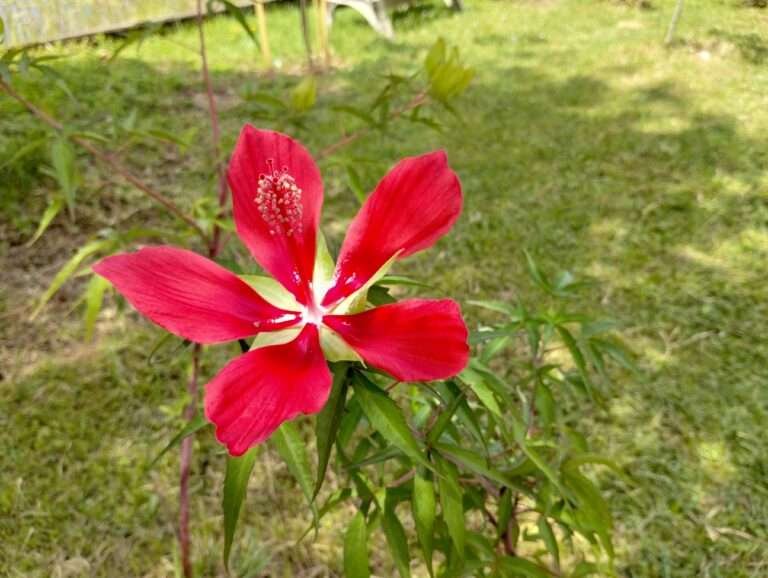
Common Names, Latin Name and Family
Scarlet rosemallow, scarlet hibiscus, crimson rosemallow, wild red mallow, and Texas star hibiscus.
Its Latin name is Hibiscus coccineus.
Scarlet rosemallow is in the Malvaceae, or the mallows, family.
Form
Scarlet rosemallow is a perennial shrub that can grow to a height of 4 to 10 feet. It dies to the ground in areas with frosts, but returns in the spring. In frost free areas it can reach its full height of ten feet or more.
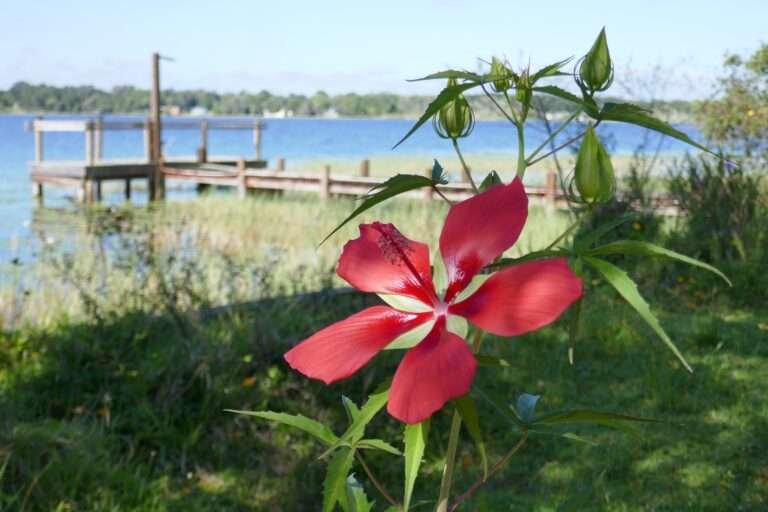
Leaves
The leaves are alternate. Their shape is palmate with toothed margins. Their venation is reddish with some reddish-green on the margins.
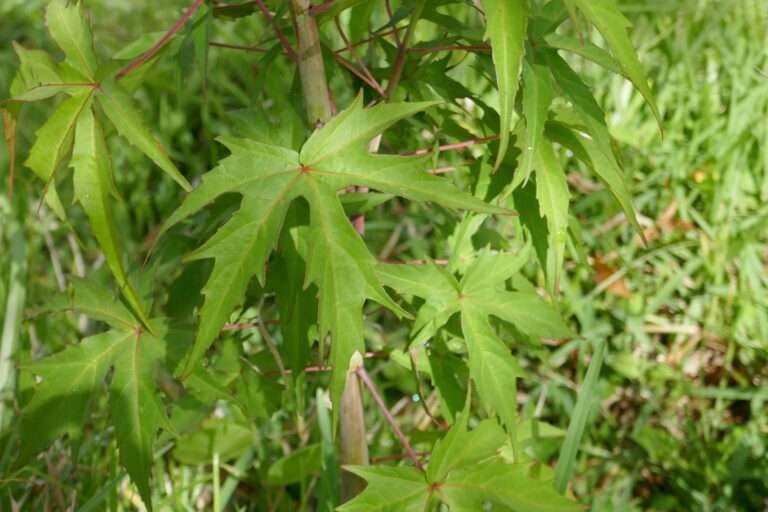
Flowers
The flowers appear in spring, summer and fall. The brilliant red blooms are approximately 8 inches across.
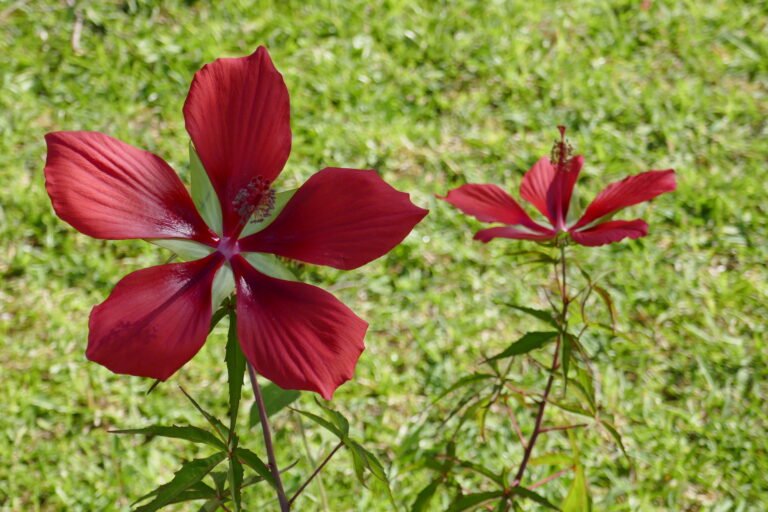
Habitat
Scarlet rosemallow is found in swamps and wet areas throughout the state.
Native Range
It is native to the following states: AL, AR, FL, GA, LA, MS, NC, SC, and VA.
Landscape Use
In the home landscape it grows in full sun with moist to wet soils. It needs a good source of sunlight in order for it to produce flowers.
It does well along the edges of a pond, lake or stream.
It is best planted where the water table is high, near a pond or lake, or a wet problem area such as a drainage ditch.
Wildlife Uses
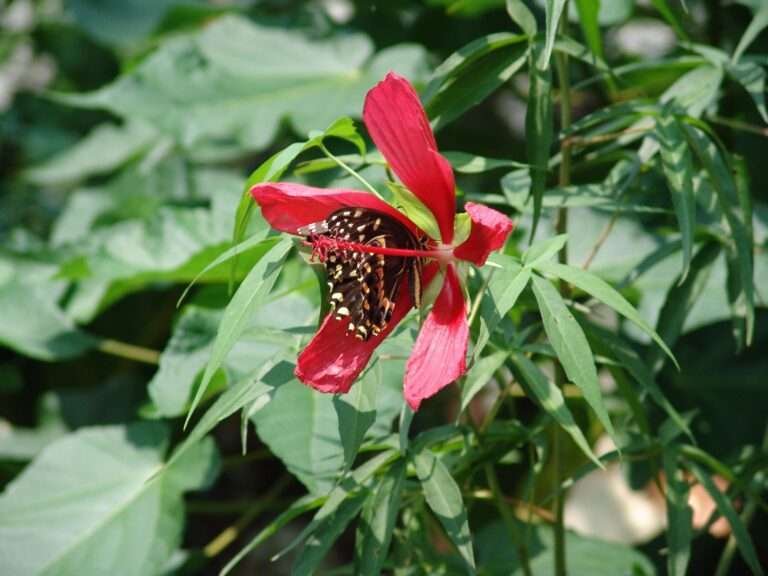
The flowers are a source of nectar for hummingbirds and butterflies. The seeds may be eaten by birds and small mammals.
Propagation
Can be grown easily from seed. It also transplants very well. Be sure to remove any flowers so the transplant can focus its energy on recovering.